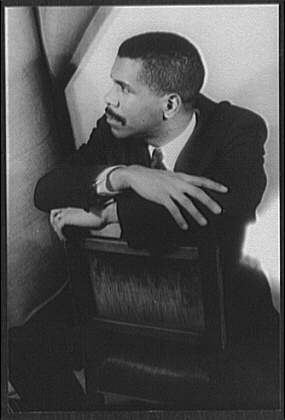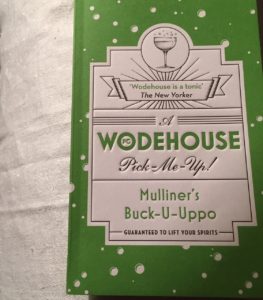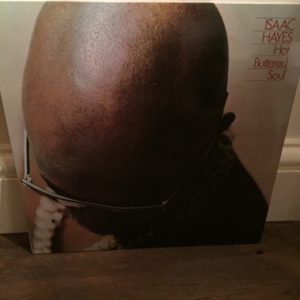
A Newest Americans face.
Point of view is a powerful narrative tool. Take, for example, the Newest Americans project that we spotlighted this week. For some politicians and hate-mongerers, immigrants are a scourge. But in this project, immigrants get to tell their own stories of their journeys to America. And in Ebonye Gussine Wilkins’ essay on a white journalist who “rediscovers” black writer William Kelley, she examines why Kelley might have decided to tell the story of blacks from a white perspective. This week’s homework: Try writing something from an unexpected point of view; it may transform the story, and even elevate it.

The faces of Newest Americans.
Newest Americans: stories of immigrants who help make America great. The Newest Americans project is a self-proclaimed “collaboratory” —a collaborative laboratory — led by journalists, citizen journalists, artists, academics and regular people who want to share where they came from to figure out where we are going as a nation. Contributor Jasmine Bager writes: “Julie Winokur, the media director of Newest Americans, co-founded the initiative years before Trump’s election. When I asked Winokur how she had the foresight to know that this would be a trending topic today, she said: ‘First of all, it’s not just an issue now, it’s been an issue for decades. It didn’t take a crystal ball to find out what would happen in 2018.'”
The soundtrack: “This Land Is Your Land,” by Woody Guthrie. I’m struck by this final stanza , which I found on the Woody Guthrie site. He doesn’t even sing it in this version of the song, but it’s pretty wonderful: “Nobody living can ever stop me/As I go walking that freedom highway/Nobody living can ever make me turn back/This land was made for you and me.”
One Great Sentence
“Remember, remember always, that all of us, and you and I especially, are descended from immigrants and revolutionists.”
President Franklin D. Roosevelt. Read why we think it’s great.

William Melvin Kelley, in a 1963 portrait by Carl Van Vechten.
The New Yorker’s “Lost Giant of American Literature” and the prism of race. Contributor Ebonye Gussine Wilkins has a thought-provoking essay on the recent New Yorker article about “forgotten” black writer William Kelley. She notes the parallels between his striking debut novel, “A Different Drummer,” and the Kathryn Schulz piece in the magazine: Both are stories of black men told through the eyes of whites. She closes with a quote from the article: “Many white readers didn’t want a black writer telling them what they thought, especially when so much of it was withering, while many black readers, long starved for literary representation, didn’t want to read about more white characters. To make matters worse, very few people, white or black, wanted to subscribe to a vision of America that grew progressively more damning in the course of Kelley’s career.”
The soundtrack: “Giant Steps,” by John Coltrane. Like Kelley, Coltrane was a black artist whose work was experimental and complex. Both challenge you.
What I’m reading online: Trump’s Most Influential White Nationalist Troll Is A Middlebury Grad Who Lives In Manhattan, by Luke O’Brien. In a nice bit of data journalism, Huffington Post investigated the influence of Twitter troll Ricky Vaughn (who turns out to be a Vermonter named Douglass Mackey). O’Brien writes: “Ricky Vaughn also played an important role in amplifying disinformation injected into American politics by the Russian government. HuffPost and a team of data scientists known as Susan Bourbaki Anthony that tracks online propaganda analyzed who was retweeting the now infamous Kremlin-controlled Twitter account @TEN_GOP, which consistently praised Trump, attacked Democratic rival Hillary Clinton and churned out a vile medley of racism, Islamophobia and “’fake news.'”
How to Use the Dial Telephone (1927), from the Public Domain Review. It’s been a heavy week on Storyboard, so how about something fun? The Public Domain Review is such a great rabbit hole. Like this piece, which includes an AT&T film clip shown in theaters in 1927, with the advent of rotary dial telephones. My favorite piece of advice: “If the called party does not answer within a reasonable length of time, hang up the receiver.” (Define “reasonable.” Ten rings? Twenty?) And I also love that half the people alive today would probably say, “What’s a dial telephone?”
 What’s on my bedside table: “A Wodehouse Pick-Me-Up! Mulliner’s Buck-U-Uppo.” This P.G. Wodehouse short fits in the category of the rotary phone primer above — sometimes you just need an escape from the stresses of our news cycle. Like this bit, from a suitor’s prospective fiancée, whose mother would not approve if they eloped: “You don’t know mother. The moment she got that picture-postcard, she would come over to where we were and put you across her knee and spank you with a hair-brush. I don’t think I could ever feel the same towards you if I saw you lying across my mother’s knee, being spanked by a hair-brush. It would spoil the honeymoon.”
What’s on my bedside table: “A Wodehouse Pick-Me-Up! Mulliner’s Buck-U-Uppo.” This P.G. Wodehouse short fits in the category of the rotary phone primer above — sometimes you just need an escape from the stresses of our news cycle. Like this bit, from a suitor’s prospective fiancée, whose mother would not approve if they eloped: “You don’t know mother. The moment she got that picture-postcard, she would come over to where we were and put you across her knee and spank you with a hair-brush. I don’t think I could ever feel the same towards you if I saw you lying across my mother’s knee, being spanked by a hair-brush. It would spoil the honeymoon.”
 What’s on my turntable: “Hot Buttered Soul,” by Isaac Hayes. This is one of my favorite albums. But for this week, at least, the best part of the album is its relation to the post above about the “lost giant” of American literature. Unlike that piece, which looks at black art through a white prism, this tremendous black artist takes very white-bread songs like “Walk on By” and “By the Time I Get to Phoenix” and utterly transforms them. Stop me if you’ve heard this before from me: Isaac Hayes was a genius, and is totally underrated.
What’s on my turntable: “Hot Buttered Soul,” by Isaac Hayes. This is one of my favorite albums. But for this week, at least, the best part of the album is its relation to the post above about the “lost giant” of American literature. Unlike that piece, which looks at black art through a white prism, this tremendous black artist takes very white-bread songs like “Walk on By” and “By the Time I Get to Phoenix” and utterly transforms them. Stop me if you’ve heard this before from me: Isaac Hayes was a genius, and is totally underrated.
If you want to chat about storytelling (or music), I’m Storyboard editor Kari Howard, and you can reach me at editor@niemanstoryboard.org. Or you can find me at @karihow on Twitter.


